Themed collection Nanocarbons

Nanoscale & Nanoscale Advances joint themed collection on nanocarbons
This themed issue includes a collection of articles on nanocarbons.

Nanoscale, 2019,11, 14097-14098
https://doi.org/10.1039/C9NR90159K
Nanocarbon materials in water disinfection: state-of-the-art and future directions
The major modes of using nanocarbon materials for water disinfection: hydrogel filters, filtration membranes, recyclable aggregates, electrochemical devices, and photocatalysts.

Nanoscale, 2019,11, 9819-9839
https://doi.org/10.1039/C9NR02007A
Recent progress on carbon nanomaterials for the electrochemical detection and removal of environmental pollutants
Highlights of recent achievements on the applications of carbon nanomaterials for electrochemical detection and removal of environmental pollutants.
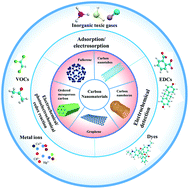
Nanoscale, 2019,11, 11992-12014
https://doi.org/10.1039/C9NR02935D
Two-dimensional hierarchically porous carbon nanosheets for flexible aqueous supercapacitors with high volumetric capacitance
Pyrolytic carbons derived from two sister resins (with different crosslinking degrees) show a 2D nanosheet structure with and without hierarchical pores on the 2D plane, respectively. 2D-HPC displays a high volumetric capacitance in a flexible aqueous supercapacitor.

Nanoscale, 2019,11, 11086-11092
https://doi.org/10.1039/C9NR02476J
Nanophase graphene frameworks
Nanophase graphene frameworks assembled by interconnected domains exhibit drastically elevated durability of graphene towards physical and chemical destruction.
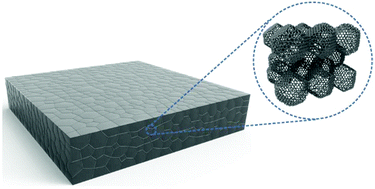
Nanoscale, 2019,11, 9264-9269
https://doi.org/10.1039/C9NR02281C
Mechanochemical synthesis of N-doped porous carbon at room temperature
One-pot mechanochemical synthesis of N-doped porous carbons at room temperature using a planetary ball mill.

Nanoscale, 2019,11, 4712-4718
https://doi.org/10.1039/C9NR01019J
Ultraviolet-pumped white light emissive carbon dot based phosphors for light-emitting devices and visible light communication
UV-pumped white light emissive carbon dot based phosphors produced by homogeneously embedding RGB emissive carbon dots in a silica matrix.
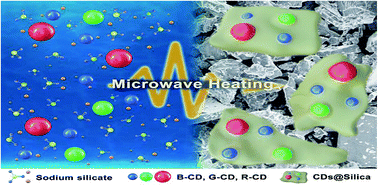
Nanoscale, 2019,11, 3489-3494
https://doi.org/10.1039/C9NR00224C
Inkjet-printed graphene Hall mobility measurements and low-frequency noise characterization
Inkjet printed graphene is in-depth investigated by means of Hall mobility measurements, low-temperature magnetoresistance analysis, and low frequency noise characterization.

Nanoscale, 2020,12, 6708-6716
https://doi.org/10.1039/C9NR09289G
Graphene oxide–polysulfone filters for tap water purification, obtained by fast microwave oven treatment
A novel approach to combine graphene oxide (GO) sheets with commercial polysulfone (PSU) granules for improved removal of organic contaminants from water is described.
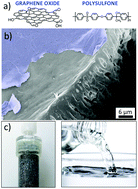
Nanoscale, 2019,11, 22780-22787
https://doi.org/10.1039/C9NR06897J
High-performance supercabatteries using graphite@diamond nano-needle capacitor electrodes and redox electrolytes
Supercabatteries have the features of supercapacitors and batteries. Diamond supercabatteries constructed using graphite@diamond nano-needles as electrodes and redox electrolytes possess high power and energy densities as well as long lifetime.
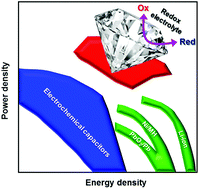
Nanoscale, 2019,11, 17939-17946
https://doi.org/10.1039/C9NR07037K
Au-Luminol-decorated porous carbon nanospheres for the electrochemiluminescence biosensing of MUC1
We propose a novel strategy by high dispersion of luminophores inside porous carbon nanospheres for the ultrasensitive electrochemiluminescence detection of MUC1.
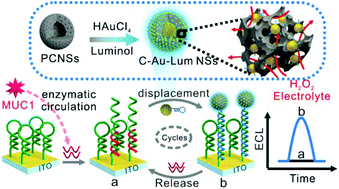
Nanoscale, 2019,11, 16860-16867
https://doi.org/10.1039/C9NR02190F
Near-infrared light activatable hydrogels for metformin delivery
Drug loaded hydrogels have proven to be versatile controlled-release systems.
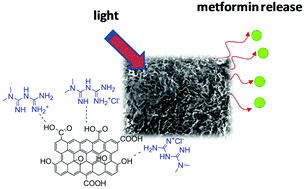
Nanoscale, 2019,11, 15810-15820
https://doi.org/10.1039/C9NR02707F
Particle size-control enables extraordinary activity of ruthenium nanoparticles/multiwalled carbon nanotube catalysts towards the oxygen reduction reaction
Catalysts with optimal size for the oxygen reduction reaction (ORR) play a vital important role in fuel cells and metal–air batteries.
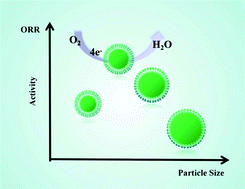
Nanoscale, 2019,11, 13968-13976
https://doi.org/10.1039/C9NR05202J
A Pt-free graphenaceous composite as an electro-catalyst for efficient oxygen reduction reaction
The MgO decorated multi-layered graphene oxide (MLGO) catalyst exhibit an efficient oxygen reduction reaction capability with high activity and durability.
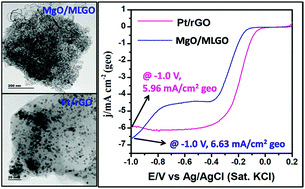
Nanoscale, 2019,11, 13300-13308
https://doi.org/10.1039/C9NR02912E
Graphene-based neuron encapsulation with controlled axonal outgrowth
We demonstrate the formation of a micro-roll for neuron encapsulation with a self-folding graphene/parylene-C bilayer film, and show the importance of using pores on the micro-roll to allow the encapsulated neurons to interact with the surroundings.
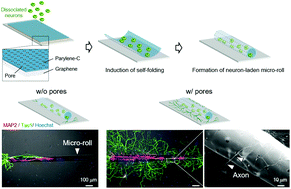
Nanoscale, 2019,11, 13249-13259
https://doi.org/10.1039/C9NR04165F
Sol–gel chemistry in molten Brønsted acids towards “activated” carbons and beyond
Chemical activation of carbons is usually assigned to an oxidative and dehydrating nature of activating agents. We herein suggest that activating agents rather act as high temperature solvents and the porosity is developed by carbon phase separation.
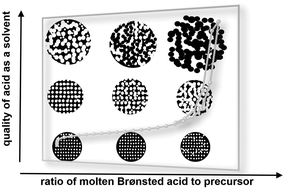
Nanoscale, 2019,11, 13154-13160
https://doi.org/10.1039/C9NR01722D
Carbon dots, a powerful non-toxic support for bioimaging by fluorescence nanoscopy and eradication of bacteria by photothermia
Carbon Dots (CDs) are innovative materials which have potential applications in many fields, including nanomedicine, energy and catalysis.
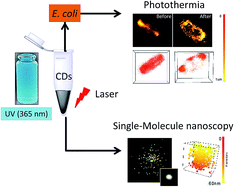
Nanoscale Adv., 2019,1, 2571-2579
https://doi.org/10.1039/C9NA00140A
Proteinase-sculptured 3D-printed graphene/polylactic acid electrodes as potential biosensing platforms: towards enzymatic modeling of 3D-printed structures
We exploit the biodegradability of polylactic acid to sculpt 3D-printed surfaces at the micro- and nanoscale. Graphene/polylactic acid electrodes were activated by selective enzyme-guided cleavage of polylactic acid fragments at the surface.
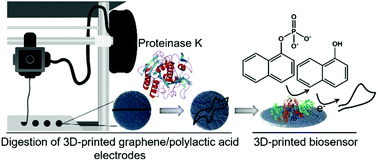
Nanoscale, 2019,11, 12124-12131
https://doi.org/10.1039/C9NR02754H
A multilayer-graphene nanosheet film deposited on a ceramic substrate without a catalyst for constructing an electrochemiluminescence imaging platform
Without a catalyst, a multi-layer graphene nanosheet (MLGNS) film is deposited on a ceramic substrate by using ethanol as the carbon source. The MLGNS film/ceramic shows promising applications in electrochemistry.
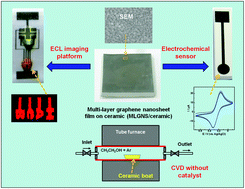
Nanoscale, 2019,11, 12132-12138
https://doi.org/10.1039/C9NR02480H
Brilliant blue, green, yellow, and red fluorescent diamond particles: synthesis, characterization, and multiplex imaging demonstrations
Rapid thermal annealing of electron irradiated nanoscale type Ib diamond particles facilitates formation of various nitrogen-related fluorescent color centers, providing either red, yellow, green, or blue fluorescence for downstream multiplex imaging applications.
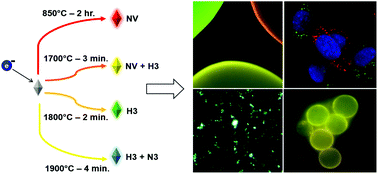
Nanoscale, 2019,11, 11584-11595
https://doi.org/10.1039/C9NR02593F
Asymmetric supercapacitors with high energy densities
The low energy densities of supercapacitors (SCs) are generally limited by the used anodes.
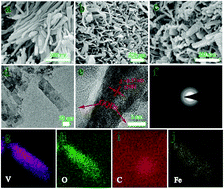
Nanoscale, 2019,11, 11946-11955
https://doi.org/10.1039/C9NR02607J
Exonuclease-assisted target recycling for ultrasensitive electrochemical detection of microRNA at vertically aligned carbon nanotubes
The one-step biorecognition at a vertically aligned SWCNT-based biosensor and T7 exonuclease-assisted target recycling enable the ultrasensitive bioassay of microRNA-21.
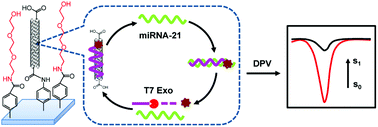
Nanoscale, 2019,11, 11262-11269
https://doi.org/10.1039/C9NR02543J
Thiographene synthesized from fluorographene via xanthogenate with immobilized enzymes for environmental remediation
Thiographene with a high content of thiol groups and it was used as a platform for anchoring both hydrolytic and oxidoreductase-based enzymes to produce efficient biocatalytic systems with no leaking of immobilized enzymatic molecules during storage.
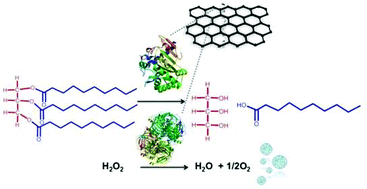
Nanoscale, 2019,11, 10695-10701
https://doi.org/10.1039/C9NR02376C
Azulenocyanines immobilized on graphene; on the way to panchromatic absorption and efficient DSSC blocking layers
Herein, a novel electron donor–acceptor hybrid consisting of a NIR absorbing azulenocyanine as an electron donor and few-layer graphene as an electron acceptor was prepared.
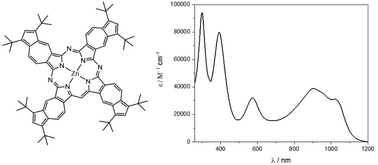
Nanoscale, 2019,11, 10709-10715
https://doi.org/10.1039/C9NR02300C
A single nanowire sensor for intracellular glucose detection
We report for the first time the development of a single nanowire electrochemical sensor for the detection of intracellular glucose levels.
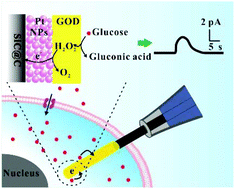
Nanoscale, 2019,11, 10702-10708
https://doi.org/10.1039/C9NR01997A
Superconducting boron doped nanocrystalline diamond on boron nitride ceramics
The zeta potential of boron nitride ceramics and a layer of diamond grown on the ceramic.
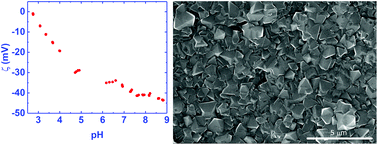
Nanoscale, 2019,11, 10266-10272
https://doi.org/10.1039/C9NR02729G
A room-temperature interfacial approach towards iron/nitrogen co-doped fibrous porous carbons as electrocatalysts for the oxygen reduction reaction and Zn–Air batteries
The development of nonprecious and efficient catalysts to boost the oxygen reduction reaction (ORR) is imperative.
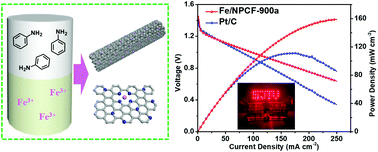
Nanoscale, 2019,11, 10257-10265
https://doi.org/10.1039/C9NR01639B
Gold nanoparticle-doped three-dimensional reduced graphene hydrogel modified electrodes for amperometric determination of indole-3-acetic acid and salicylic acid
Three-dimensional (3D) networked nanomaterials have attracted great interest because of their unique porous and 3D-networked structures.

Nanoscale, 2019,11, 10247-10256
https://doi.org/10.1039/C9NR01309A
Electrochemical performance at sputter-deposited nanocarbon film with different surface nitrogen-containing groups
Carbon materials containing nitrogen have been extensively studied as electrode materials for use in non-platinum cathodes of fuel cells due to their high electrocatalytic activity for oxygen reduction.
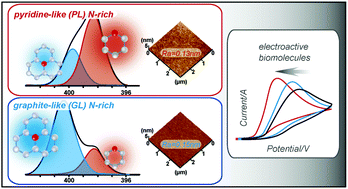
Nanoscale, 2019,11, 10239-10246
https://doi.org/10.1039/C9NR01569H
MoS2 versatile spray-coating of 3D electrodes for the hydrogen evolution reaction
A straightforward MoS2 spray-coating method was applied to rigid, flexible, porous and 3D-printed carbon-based surfaces, yielding improved performance for the hydrogen evolution reaction.
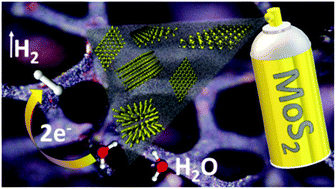
Nanoscale, 2019,11, 9888-9895
https://doi.org/10.1039/C9NR01876J
Gram-scale fabrication of Bi@C nanoparticles through one-step hydrothermal method for dual-model imaging-guided NIR-II photothermal therapy
Bi@C nanoparticles were fabricated at the gram scale through a one-step hydrothermal method for dual-model imaging-guided NIR-II photothermal therapy.
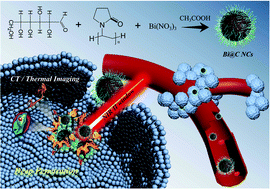
Nanoscale, 2019,11, 9906-9911
https://doi.org/10.1039/C9NR01557D
Integrating ultrathin and modified NiCoAl-layered double-hydroxide nanosheets with N-doped reduced graphene oxide for high-performance all-solid-state supercapacitors
This study reports a novel NiCoAl-LDH/N-doped graphene nanohybrid integrating more oxygen abundance and high conductivity, which exhibits superior supercapacitive performance.
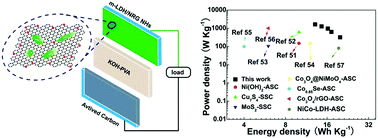
Nanoscale, 2019,11, 9896-9905
https://doi.org/10.1039/C9NR02357G
Recyclable nanographene-based micromachines for the on-the-fly capture of nitroaromatic explosives
A powerful, efficient and fast strategy to remove nitroaromatic explosives using recyclable graphene-based self-propelled tubular micromachines.
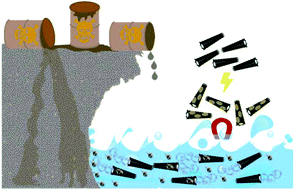
Nanoscale, 2019,11, 8825-8834
https://doi.org/10.1039/C9NR02211B
Increased electrode activity during geosmin oxidation provided by Pt nanoparticle-embedded nanocarbon film
The musty odor compound geosmin was electrochemically detected by using Pt nanoparticle (PtNP)-embedded nanocarbon (Pt–C) films formed with unbalanced magnetron (UBM) co-sputtering.
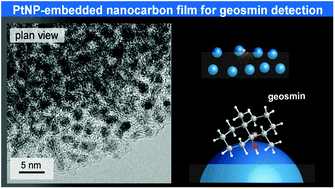
Nanoscale, 2019,11, 8845-8854
https://doi.org/10.1039/C9NR00793H
Lysosome-targeted carbon dots for ratiometric imaging of formaldehyde in living cells
CDs based ratiometric fluorescent probe for formaldehyde was developed and successfully employed in bioimaging of formaldehyde in lysosome.
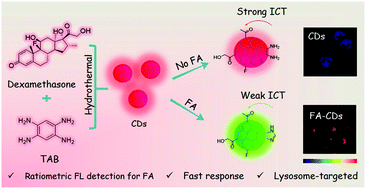
Nanoscale, 2019,11, 8458-8463
https://doi.org/10.1039/C9NR01678C
Efficient surface functionalization of detonation nanodiamond using ozone under ambient conditions
Room temperature ozonation of nanodiamond in colloidal suspension leads to surface ozonides that are efficiently transformed into different oxygen-containing groups.
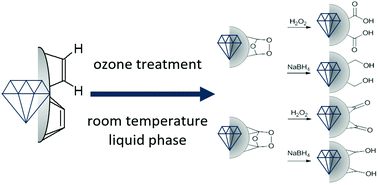
Nanoscale, 2019,11, 8012-8019
https://doi.org/10.1039/C9NR01716J
Three-dimensional catalyst systems from expanded graphite and metal nanoparticles for electrocatalytic oxidation of liquid fuels
Expanded graphite decorated with palladium or platinum/palladium nanoparticles is cost-effective, efficient, and stable for electrocatalytic oxidation of liquid fuels.

Nanoscale, 2019,11, 7952-7958
https://doi.org/10.1039/C9NR00633H
Using hydrogen isotope incorporation as a tool to unravel the surfaces of hydrogen-treated nanodiamonds
We report a robust method for the labelling of detonation nanodiamonds with hydrogen isotopes and demonstrate the usefulness of isotope incorporation in investigating the surface chemistry of such nanomaterials.
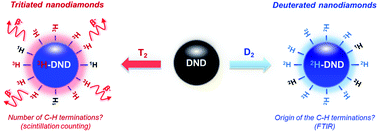
Nanoscale, 2019,11, 8027-8036
https://doi.org/10.1039/C9NR01555H
A synergistic approach to enhance the photoelectrochemical performance of carbon dots for molecular imprinting sensors
Rightly adjusting the energy level; optimization of intimate interfacial contact; extension of the light absorption range; and enhancement of charge-transfer efficiency.
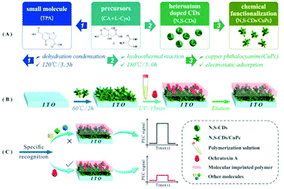
Nanoscale, 2019,11, 7885-7892
https://doi.org/10.1039/C9NR01675A
Synthesis of Au nanorod-embedded and graphene oxide-wrapped microporous ZIF-8 with high electrocatalytic activity for the sensing of pesticides
Graphene oxide (GO) reinforced Au nanorods@ZIF-8 (AuNRs@ZIF-8) was developed for electrochemical sensing of pesticides with high sensitivity and good stability.
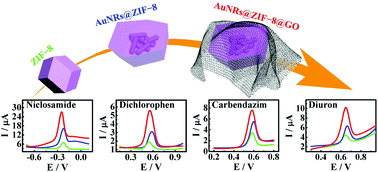
Nanoscale, 2019,11, 7839-7849
https://doi.org/10.1039/C9NR01101C
Stimuli-enabled switch-like paracetamol electrochemical sensor based on thermosensitive polymer and MWCNTs-GQDs composite nanomaterial
The reversible and temperature-controlled electrochemical response of the thermosensitive polymer PS-PNIPAm-PS/MWCNTs-GQDs/GCE to paracetamol.
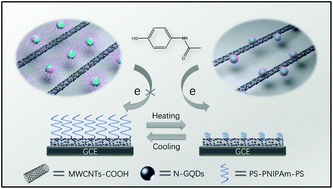
Nanoscale, 2019,11, 7394-7403
https://doi.org/10.1039/C8NR09434A
(Photo)electrocatalysis of molecular oxygen reduction by S-doped graphene decorated with a star-shaped oligothiophene
The high (photo)electrocatalytic activity and stability towards the oxygen reduction reaction of a star-shaped oligothiophene/S-doped graphene ensemble is presented.

Nanoscale, 2019,11, 7335-7346
https://doi.org/10.1039/C9NR01620A
Tuning the fluorescence performance of carbon dots with a reduction pathway
The fluorescence emission and quantum yield can be tuned by reduction.
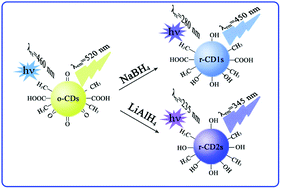
Nanoscale, 2019,11, 5998-6003
https://doi.org/10.1039/C8NR09587F
One-pot synthesis of a CdS-reduced graphene oxide–carbon nitride composite for self-powered photoelectrochemical aptasensing of PCB72
We synthesized a CdS–rGO–C3N4 nanocomposite with enhanced photoelectrochemical (PEC) performance to construct a self-powered PEC aptasensor for sensitive and selective detection of PCB72.
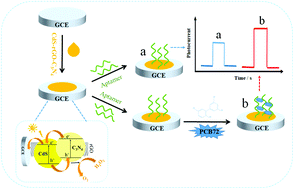
Nanoscale, 2019,11, 5982-5988
https://doi.org/10.1039/C9NR00966C
About this collection
Guest Edited by Dr Nianjun Yang (University of Siegen, Germany), Professor Dai-Wen Pang (Wuhan University, China) and Professor Yasuaki Einaga (Keio University, Japan).
This collection covers the contributions regarding synthesis, properties and applications of various nanocarbon films (e.g., graphene, diamond, diamond-like carbon, carbon nanotubes, fullerenes, etc.), their nanostructures (e.g., graphene/carbon dots, diamond particles, etc.), and their composites. The synthesis approaches of large area and defects-free nanocarbons, characterization of low dimensional fine structures of nanocarbons, surface properties (especially surface chemistry of nanocarbons), as well as their applications in the fields of biomedicine, energy, catalysts, detection, and environment, engineering, and electronics are highlighted.
Moreover, the scope of this issue loosely aligns with an accompanying symposium held at the 2019 Spring E-MRS meeting: Symposium M – Advanced carbon materials: electrochemical aspects, which will be held in Nice, France from 27-31 May 2019.